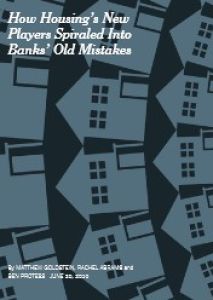Join getAbstract to access the summary!

Join getAbstract to access the summary!
Matthew Goldstein, Rachel Abrams and Ben Protess
How Housing’s New Players Spiraled into Banks’ Old Mistakes
The New York Times, 2016
What's inside?
How has private equity firms’ recent investment in America’s housing market affected homeowners and renters?
Recommendation
Private equity firms’ entrance into the housing market in the wake of the 2008 housing crisis helped restabilize America’s economy, but have they done a better job than banks at keeping struggling homeowners from foreclosure? Investigative journalists Matthew Goldstein, Rachel Abrams and Ben Protess examine private equity firms’ effect on homeowners and renters. In the process, the authors reveal the ways the firms have, in many ways, “repeated the mistakes” of the banks they supplanted. getAbstract recommends this article to policy makers, homeowners and economists.
Summary
About the Authors
Matthew Goldstein is assistant business editor for the Dealbook financial news service at The New York Times, where Rachel Abrams and Ben Protess are investigative reporters.



















Comment on this summary